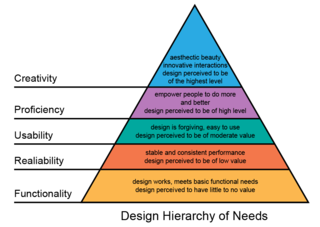
Consumer Behavior
Behavioral Science Improves Online Advertising
Advertiser Anthony Tham on the applications of behavioral science.
Posted December 27, 2016 Reviewed by Abigail Fagan
Anthony Tham is one of the most successful advertising creatives in Southeast Asia. Working with Singapore and Chinese markets for the past 18 years, Anthony has become enthusiastic about applying behavioral sciences to the field of advertising—especially online.
“As you'll soon see, behavioral economists/psychologists/neuroscientists will be in demand just about everywhere, advertising included,” he told me in an email. After that, I thought it would be a great idea to interview him to understand the real potential of applying behavioral sciences in the online world.
What are the differences between what makes us tick and what makes us click? (i.e., between offline and online persuasion)
First thing's first, I’d like to expand on the definition of “online.” It’s beyond simply a website. Or for that matter, it’s also bigger than an app, social media platform, email, etc. These are just the “delivery vehicles” to deliver that “online,” or more accurately, “connected-experience.”
With the advent of the digital age, along came the digital mindset, which is essential to thriving in this particular medium. A telling—albeit a tad extreme—example is the fact that humans’ brains have evolved to rely on search engines (like Google) when trying to recall information, as opposed to the actual information or original source (Sparrow, Liu & Wegner, 2011).
This digital mindset pretty much obliterates what the ad industry knew about doing ads and persuasion in the offline spaces (especially the wisdom leftover from the golden “Mad Men era of advertising”).
Of course, fundamentally, it’s all centered around humans.
Digital practitioners seemed to do better by adopting “design thinking,” in which, the entire digital experience is designed around the target audience's psychological, behavioral, and unmet needs. Before, a typical offline advertising campaign was often centered around what the advertiser wanted to be known as—achieved by broadcasting a one-way “telling” message that used middle-ground, blanket "spray-and-pray" strategy to reach as many people as possible (target audience or not) with the eventual hope of reaching, communicating, persuading and converting. These messages also often used excessive repetitions in the hope of being remembered (because we all know that a lie repeated often becomes the truth).
Because of this uni-directional message approach usually employed offline, there are few accurate performance indicators to prove that the “supposed” nudge worked. Results are only reviewed post-campaign as a summative learning. The learnings derived are best described as “too little, too late.”
Conversely, the online platform has afforded its practitioners with more tools and power in their arsenal.
For example, it is much easier conducting experiments online when you can accurately reach your precise target audiences to test your hypothesis before even beginning a campaign. And with numerous online tools, we can test our target audiences for biases, heuristics, cultural relevance, and more for formative insights before we even arrive at a hypothetical solution and strategy.
From these learnings, we can quickly create what we call an “MVP” (Minimum Viable Product), to test our hypothetical solution. A real, online target audience can be tracked (i.e. demographics, operating system, where it came from, how it behaved while interacting, mouse hover, mouse clicks, keystrokes, duration of stay) via field or controlled tests such as eye tracking, biological response tracking, EEG tracking, true implicit association reaction time tests, and more.
Thus, accurate formative and summative learnings can be had in speeds unimaginable by offline means. Because of the nature of the online medium, these learnings can quickly be turned into improvements and tweaked as the campaign is being rolled out. This means that campaigns can be much more effective.
The potential of online persuasion is much bigger than simply optimizing an ad campaign or website. With the connectedness of this medium, we can also create digital products that can truly change behaviors (cue literature by BJ Fogg, Nir Eyal, Stephen Wendel etc.). With the proliferation of smart devices that we do not ever lose sight of, it has enabled a high degree of interactivity to effectively create “sticky” behaviors. Such as in the case of Zoë Chance and her pedometer (Tedx, 2013).
Persuasive devices like these can take numerous forms, such as a traditional mobile app, or an “Internet-of-Things” wearable and smart devices, or even predictive algorithms based on machine learnings.
In short, with more connectedness, more tech, and more code, there will be more tools to nudge consumers in ways previously unimaginable.
What's the most important psychological dimension a website should evoke in its users during that "nudging process"?
One interesting truth about website design can be nicely summed up by Stephen Anderson in his adaptation of Maslow's Hierarchy of Needs of Website Design. This is especially true when it comes to the User Experience (UX) design.

When it comes to creativity, the general rule of thumb is: “Just make the user feels something, any damn thing!” Humor, sadness, angst, awe, whatever. These “hot emotional states” will help make our users’ experiences more salient, and at times, more agreeable to our brand or website.
It is, after all, emotions and/or the anticipation of emotions that help nudge the viewer into action (as opposed to simply conclusion) by overcoming the inhibitory signals, as modeled in the Diffusion Model of Neuroeconomics (Seeley et al, 2006).
Personally, I’ll aim to spread positive emotional contagion. Share stories. Encourage more sharing (for that dopamine and oxytocin). And provide cool content that the user can, in turn, share for self-presentation.
What do you think will be the major concerns of policy makers in the future, and how can behavioral science help to regulate online behavior in those areas?
Public policies, in general, require more sensitivity than commercial practices. Privacy, ethics, freewill, paternalism, backfiring, and public backlash are more pronounced, and—in my personal experiences—placed higher in importance than the supposed nudge effectiveness.
Another key issue with regard to public policies is that some methods commonly employed to harness insights can be seen as Grey Hat. And as such, many government agencies are wary of employing such methodologies. Without these tools at our disposal, we’re left with the usual explicit polls, surveys, and focus groups—which are not the most ideal sources of insight, due to self-reporting biases, dishonesty, spotlight effect, observer-expectancy effect, herd mentality, available heuristic, etc.
The third big issue is how the public can get upset if they realize they’ve been nudged, or in their eyes, manipulated. Even though public policy nudges aim to help the public make good choices, they can feel to the audience like interruptions of free will.
Examples range from the realization or observation that they’ve been served micro-customized content pieces due to their own filter bubble—or different people being offered different deals or content—including racial/demographic stereotyping. These events can trigger a PR storm online for those organizations involved. As Robert Cialdini forewarned, any persuasion misconstrued as manipulation can cause far deeper impacts or losses than rewards.
These issues aside, online platforms can indeed be a powerful medium for nudges, even for public policies. The 24/7 connectedness, pervasiveness, rate of penetration/adoption, the ability for micro-customizations based on the individual’s digital footprint (inferred behavior and psychographics) make it a great execution platform. BJ Fogg posits, in his Fogg Behavior Model, Behavior = Motivation + Ability + Trigger (Fogg, 2009): A behavior is the result of all three components of motivation, ability, and trigger happening all at once. It’s been a constant challenge to engineer all these three cues in the natural offline environment. However, with the digital space, this is where this model shines due to the aforementioned advantages of the online platforms.
In some of my experiences with public policies, there are even more opportunities within the gamifications of nudges. Especially when you factor in Nir Eyal’s Hook Engine of having variable rewards. These gamified-nudges seem to work better for both the public and policy makers because they use "create shared value" strategy—a win-win for everyone involved. In instances like these, the public becomes more open to the idea of sacrificing some of their ethical and privacy concerns for the rewards or the utility in exchange. This phenomenon has been rigorously researched and is known as the Privacy Paradox.



